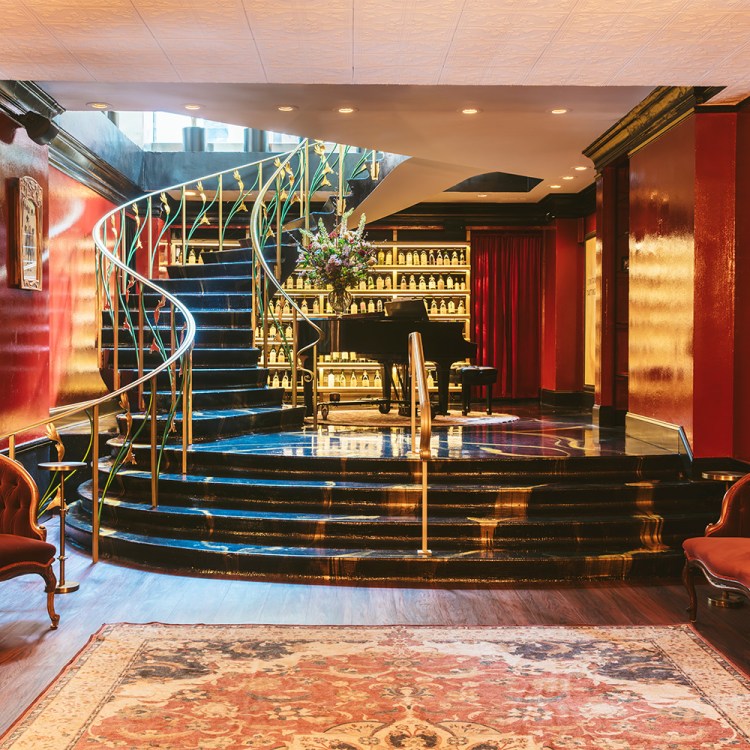There was a time when fine dining in the ‘burbs meant red sauce Italian places or steakhouses where the ribeye came one way: well-done. While the renowned Jean Banchet launched Le Francais in Wheeling in 1973, quality white-tablecloth dining (and its successors, the bistro and gastropub) were slow to make inroads beyond the city. It wasn’t until 1981 that chef Robert Burcenski and business partner J. Thomas Alves opened the much-lauded Tallgrass in Lockport.
Things picked up with the new millennium. Paul Virant launched his elegant, seasonally driven Vie in tony Western Springs in 2004; several years later, diners in blue-collar Berwyn were enjoying guinea-hen sausage with oil cured olives and tagliatelle with shrimp and scallops over a sweet pea sauce at Autre Monde. And while not every chef is tossing his toque into the ring, the suburbs nonetheless exert an appealing challenge. Chris and Megan Curren are set to debut The Graceful Ordinary in St. Charles this spring. Come summer, brasserie fans will be enjoying steak frites and more at Ryan O’Donnell’s Pomeroy in Winnetka.
Rabid food-lovers may still see most suburbs as gustatory wastelands — home of Chipotle and The Olive Garden — but it would be silly to expect an omakase outlet in every strip mall. While increasingly diverse, these car- and family-centric communities are chock-a-block with folks who sometimes just want a break from the kitchen, not a knock-your-socks-off meal. Take the North Shore. For all its affluence, it has never been crawling with book-a-table-now restaurants. Evanston’s long-shuttered Trio — once home to Rick Tramanto, Gale Gand and Grant Achatz — was for years, arguably, the most notable exception.
“The suburbs can be difficult,” admits Justin Large, who was Paul Kahan’s right-hand man at One Off Hospitality Group (Avec, Blackbird, Publican) before becoming Executive Chef at Glencoe’s Guildhall just over a year ago. “But I think chefs can get over their skis. They want to turn heads. At the end of the end of the day, you want your guests to be happy. Some people want steak with a side of mashed potatoes, others want to be turned on to something new. I think we’re seeing more of the latter these days.”

O’Donnell, who opened Wilmette’s Sophia last year with partner and steak house veteran Glenn Keefer, agrees that tastes are evolving. “The suburbs have come alive a little and seem to be very similar to what we see downtown,” says O’Donnell, for whom Pomeroy is the culmination of a long burning desire to open a French restaurant. But, he adds, prices are always a concern everywhere. “I’m not sure people realize the cost of food has gone up drastically, along with other industry products, yet restaurant prices have stayed the same, and guests’ perception is the prices should be what they were 10 to 15 years ago.”
Pricing aside, the kitchen/customer relationship is a dance, one in which the chef doesn’t always get to lead. While cuisine-specific establishments don’t have to please everyone, most restaurants must strike a balance. “We do a grilled striped bass with garam roasted sweet potatoes, yogurt and preserved lemon,” notes Large. “It’s skin on and that can be a struggle for some, but we also have fish and chips. So I think we have a nice mix of things that are familiar and dishes that may be a bit more of a reach.”
Curren, who made his mark in the city with his critically acclaimed Blue 13 in River North, has been living in the Fox Valley for seven years, and the idea off setting up shop there was never far from his mind. When the chance to partner with local developers Curt and Conrad Hurst came along, he and Megan went for it. “St. Charles has always been a thriving ‘smaller city,’ if you will,” says Megan. “With its live entertainment and theater venues, festivals and a rising food and beverage scene, it really was a no brainer.”
The Graceful Ordinary will occupy 4,700 square feet in a former ‘60s-era bank overlooking the Fox River and run a menu that ranges from roasted beet salad to whole wood-grilled fish. While the project rings a lot of bells for Curren — including working close to home and being part of a community — cooking in the ‘burbs isn’t for everyone.
“The food community pays less attention to restaurants outside of the city, which for many chefs who want recognition may be a deterrent,” observes Curren. “But many of the greatest restaurants of our time are places that are not in urban areas. The French Laundry is in Yountville, which has a vibrant dining scene, but is by no means a city center. Fäviken in Sweden was one of the most ground-breaking restaurants and it was almost three hours from any urban area. I’m not trying to compare what we are doing with any of these restaurants, but I think chefs need to remember that great cooking is great cooking no matter where it is happening.”
Join America's Fastest Growing Spirits Newsletter THE SPILL. Unlock all the reviews, recipes and revelry — and get 15% off award-winning La Tierra de Acre Mezcal.
























